Guest Blogger: Addison Thompson (’20 Pitzer College and Team Keck Member)
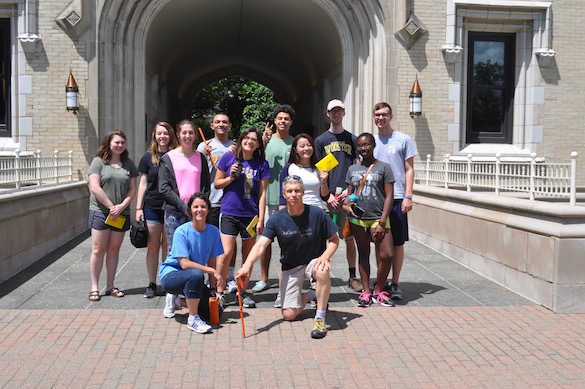
The 2017 Keck Gateway Team.
Amid our first official day at the College of Wooster, spirits were high as we embarked on the five week Keck Gateway Project. The Gateway Project encompasses two different scientific enquiries which will span three states; Ohio, Utah, and Alaska. The goal of the project centered in Utah is to determine the age of geologically young lava flows (now igneous rock) in the Ice Springs Volcanic Field of central Utah in order to add another piece to the unsolved puzzle of the Earth’s geologic history. The goal of the project centered in Alaska aims to gain a better idea of why Cedar trees in Juneau are in decline. The information gained from the students working in Alaska will help pinpoint specific environmental factors that are adversely affecting ecosystems, trees in particular. This portion of the project is one week long.
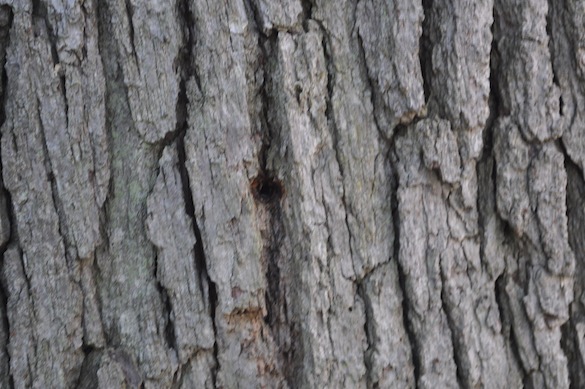
Evidence of a tree core.
Once the data from the Utah and Alaska field sites are complied, both teams will return to the College of Wooster to complete lab tests in order to answer each respective hypothesis. This portion of the project is roughly three weeks long. The participants of the project also have the opportunity to attend and present the findings of their research at the GSA’s (Geological Society of America) annual conference in Seattle in mid-October.
The first full day of the project was a beautiful one and we dove into the topic material with gusto. We began at 9am in the geology department which is located in Scovel Hall and had a discussion about the rules of authorship and the details of what mentoring means with Dr. Pollock and Dr. Wiles. Following that, details for the field work trips (Utah and Alaska) were coordinated and supplies like rock hammers and chisels were evenly distributed. At that point it was time to break for a much needed lunch. The Keck group met back at Scovel Hall around 1:30, just in time for a jaunt around the Oak grove led by Dr. Wiles, during which the group cored three trees to determine their age.
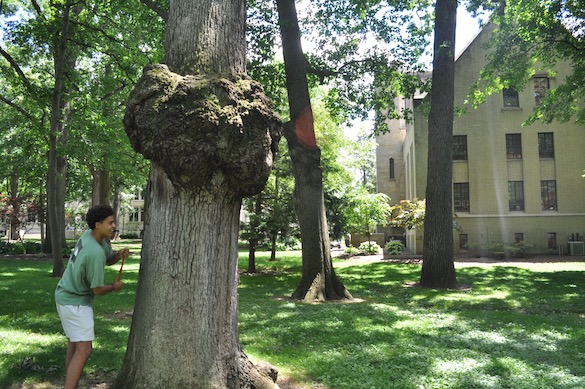
The processing of coring trees involves inserting a hollow drill into the tree, then removing the sample of the tree located in the hollow drill.

An excited Team Alaska member extracts her tree core.
The Alaska team will use this method hundreds of times in order to determine the health of trees in a large area. With the first day complete, our group looks forward to strengthening our bonds and embarking on our geology research.
On the second day, the Utah group and the Alaska group split to their respective labs to discuss the minutia of the trips.
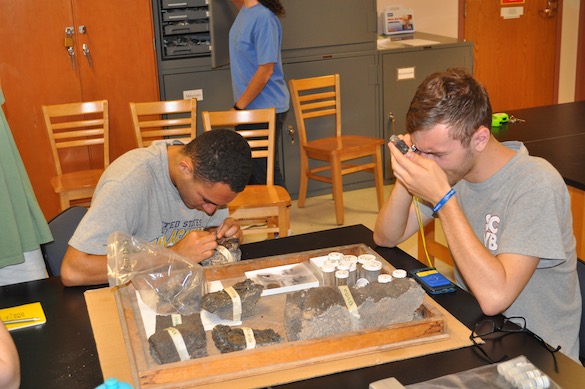
The Utah group examined basaltic rocks from the Black Rock Desert, the location where they will be conducting their fieldwork.
These rocks had previously been dated via two techniques: one being Varnish Microlamination (VML) which aims to date the rocks by measuring the coating on rock surfaces, the other being Cosmogenic Nuclide Dating which measures the accumulation of radioactive isotopes in the surfaces of the lava flows.
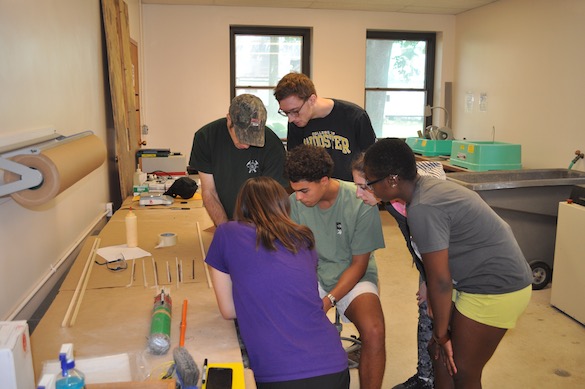
Meanwhile the Alaska group learned more about tree coring, a practice they will become very familiar with during their stay in the last frontier.
This concluded our work for the day, and we broke for lunch. The rest of the day was spent preparing for our arduous journeys to the field sites the following morning. We went shopping to stock up on various items for the trips. The day came to a conclusion with a delicious dinner and some frisbee outside Douglas Hall.
Much to their chagrin, the Alaska group was departing the College of Wooster at 4am on the third day. The Utah group was given a more lenient departure time, 6am, because their destination was 2,113 miles closer to the College. There were no issues rising bright and early and both groups headed to Cleveland Hopkins Airport with anticipation of the journey ahead of them and slightly weary eyes. To make matters more interesting for the Alaska group, their travel plans routed them through Dallas Fort Worth…not quite in their desired direction but they were sports nonetheless. And so the day went, a travel day. The Utah group touched down in Salt Lake City in the mid afternoon and began the two hour drive to the town of Fillmore, only stopping once for a much needed dinner. Eventually the group made it to their campground and settled in their cozy cabins. After a long day of travel and two hours lost, a rest is what the doctor ordered. As of writing this, the Alaska group is currently still in transit to Juneau. Tomorrow marks the first official day of field work in the Black Rock Desert for the Utah group and there is an excited fervor hanging in the air. All the tools and measurement devices are prepped and ready to go.



Nice story and images! We look forward to later Keck Gateway posts about the fieldwork. Have fun out there!